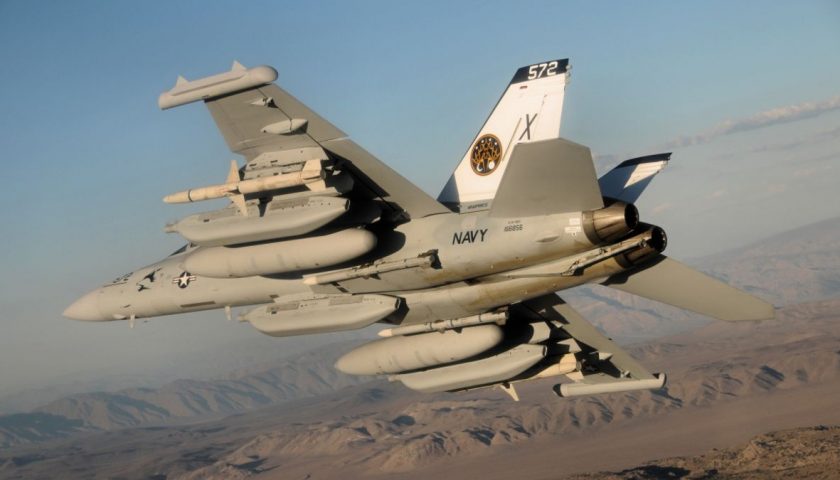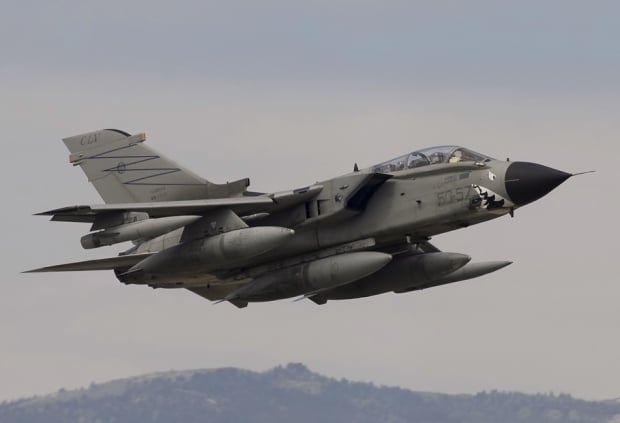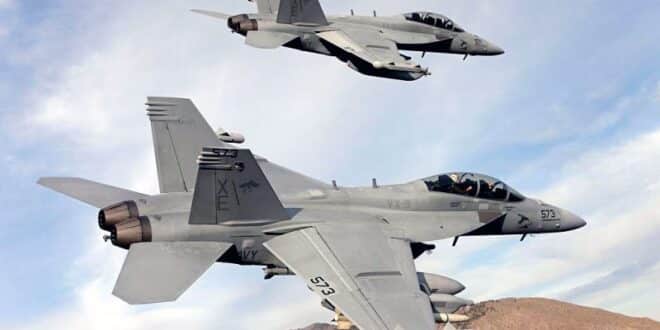The next generation of jamming pods equipping the US Navy's E / A 18G Growler, the only modern fighter jets equipped for active jamming of the Western arsenal, will have capabilities beyond compare with the already very powerful ALQs. -99 which equip the device today. Beyond enhanced jamming capabilities, these pods will also be equipped with cyber warfare functions, according to a convergence between electronic warfare and cyber warfare that is expected to prevail in this area. It is in any case as read by Rear Admiral John Meier, Commander of the Atlantic Naval Forces for the US Navy, during a Visio-conference with an association of former flight crews, the Old Crows, on April 13.
According to the American officer, the line separating electronic warfare working on radio frequency jamming technologies used by radar, wiretapping systems and communications, and that of Cyber warfare, traditionally using cable networks, tends to untie themselves, while the networks of the adversaries, in particular in China and Russia, are most often very well protected by powerful firewalls, or are quite simply disconnected from the Internet network, preventing any intrusion from the outside. The use of radio carriers to transmit malicious code elements in these systems therefore becomes one of the most relevant solutions, while signal processing, be it communication systems, wiretapping or radar, is now often digital, and therefore potentially vulnerable to this type of attack.

For such an approach, the use of jammers proves to be most relevant, allowing their electromagnetic power to supplant the original signal, to include Malware which will be used to deceive, damage or destroy the targeted equipment, or even more if it does not. these share a digital network. Therefore, a Growler thus equipped, could not only neutralize the adversary's radars and detection systems by bombarding them with electronic signals, but also by insinuating itself into the systems, and thus increase the duration or even the effectiveness of the operation. electronic attack, even after the device has withdrawn and the electronic bombardment is complete, dramatically increasing the nuisance potential of a Growler over time and space in a single mission.
The fact remains that jamming pods are far from being the only vectors likely to lead cyber attacks on radio-frequency. Smartphones, computers and other tablets, used by the military have for several years been the target of hackers to implant Malware likely to try to spread by radio frequency in the systems around them. The more computing and transmission power the carrier has, the greater the nuisance capacities. Connected objects, and by extension the Internet of Things, also represent serious vectors for carrying out this type of attack. This is why the IDF recently banned connected cars on its bases, which could pose a potential threat to the detection and communication systems deployed there.

The "cyber militarization" of radio waves will, in fact, quickly represent a more than significant threat for all legacy systems designed to digitally analyze signals, and lacking the necessary cyber protections to guard against this type of attack. . However, these are very numerous, both in the field of land armaments, such as many surface-to-air systems, for example, but also armored vehicles equipped with RF detectors, and naval armaments, we naturally think of all ships of combat clad with electromagnetic sensors, or that aircraft, which are in the same situation. What is more, there is no obligation to limit this cyber threat to radio waves alone: optronic systems with digital image analysis are also possibly sensitive to this type of cyber attack by carrier. Even sound can be used to counter passive sonar from submarines and combat ships.
As such, this is one of the main reservations expressed by some experts in the field, concerning the immense impetus aimed at digitizing and networking the battlefield, thereby multiplying the points of vulnerability of a a global system that could one day fall victim to malware capable of neutralizing it, and with it, a large part of the operational capacities of the armed forces trained to evolve in this digital bubble. It is interesting to keep in mind, for example, that the British think tank Chatham House had, in 2019, submitted a report believing that the West should consider that its entire fleet of military satellites was compromised by foreign malware, coming from China, Russia, North Korea or Iran. The recent example of the compromise of Fireeye and Solarwinds software also shows the potential stealth of this type of attack, likely to be activated at the most opportune moment by the adversary, and the most critical for the target.

The field of electronic warfare and electronic warfare-cyber convergence therefore appears to be a critical issue for the armed forces in the years to come. Unfortunately, in Europe this ability has long been more than neglected, only the Luftwaffe having, throughout the continent, devices dedicated to electronic warfare, in this case the Tornado ECR whose performance reflects the age of the devices. Electronic warfare is one of the pillars of the FCAS program, but this capability is not expected to arrive in service before 2040. European land forces are not much better off in this area, and only certain frigates, such as Naval Group's FDI, have actually been designed to handle this type of threat. , and make use of these technologies in an offensive mode. The fact remains that, overall, Europe will remain severely helpless in the face of this threat for the next 20 years, while the current tensions seem to draw a most threatening short or medium-term future.

